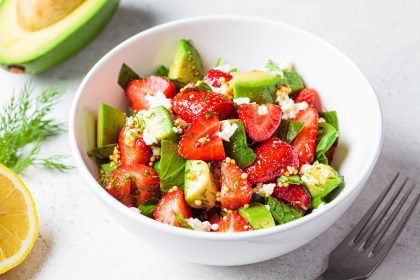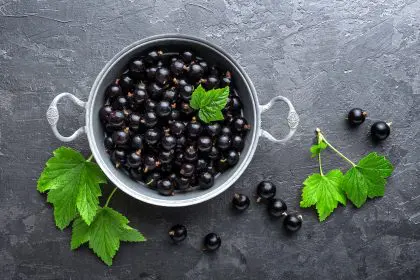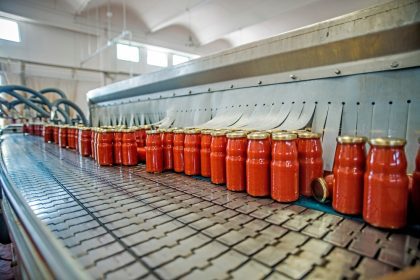The gap between nutrition intentions and daily eating reality frustrates many health-conscious individuals. Despite understanding the importance of wholesome eating, time constraints and decision fatigue frequently derail even the most committed healthy eaters. Meal preparation, the practice of planning and preparing meals in advance, offers a practical solution to this common dilemma. Studies indicate that people who implement structured meal preparation consume more nutritious foods, spend less on dining, and experience reduced mealtime stress compared to those approaching meals without planning.
The modern mealtime dilemma
Most people make approximately 200 food-related decisions daily. This cognitive load creates decision fatigue that often leads to nutritionally compromised choices, particularly during busy weekdays. Without structured planning, many default to convenience options that typically contain excess sodium, refined carbohydrates, and unhealthy fats.
Time scarcity compounds this challenge. Work responsibilities, family obligations, and commuting create compressed schedules that make daily cooking impractical for many households. This reality creates a significant gap between nutritional knowledge and actual eating practices.
The financial dimension further complicates matters. Unplanned meals frequently result in higher food expenditures through restaurant meals, delivery services, and last-minute grocery purchases. This pattern creates tension between budgetary goals and healthy eating aspirations.
6 transformative meal preparation approaches
The modular component system
Rather than preparing complete meals, this strategy involves preparing versatile components that combine into multiple configurations throughout the week.
The approach typically includes preparing: protein sources (roasted chicken, baked tofu, cooked legumes), complex carbohydrates (brown rice, quinoa, sweet potatoes), pre-cut vegetables, and prepared sauces or dressings. These elements then mix and match throughout the week to create diverse meals from common components.
Nutrition experts praise this method for providing flexibility while maintaining structure. Research indicates higher adherence rates compared to more rigid meal plans, particularly among those who prefer dietary variety.
The strategic batch cooking method
This approach focuses on economies of scale by preparing large quantities of specific recipes that refrigerate or freeze well. Unlike the modular system, batch cooking creates complete meals rather than components.
Effective batch cooking targets recipes requiring lengthy cooking times but minimal active preparation. Soups, stews, casseroles, and grain-based dishes typically work best with this method. These meals then provide quick reheating options on busy days.
Food safety experts emphasize proper cooling and storage practices with this approach. Most prepared foods remain safe and nutritionally stable in refrigeration for 3-4 days, while proper freezing extends viability to several months.
The progressive meal evolution
This innovative approach repurposes ingredients across multiple meals in a planned sequence, reducing both preparation time and food waste.
A typical progression might include: roasted chicken with vegetables on day one, chicken tacos using leftover protein on day two, and chicken soup incorporating remaining components on day three. Each meal requires progressively less preparation while utilizing ingredients completely.
Sustainability researchers note this method significantly reduces household food waste, which typically accounts for approximately 30% of food purchases in American homes.
The themed framework system
Creating meal themes for specific days provides structure while allowing flexibility within categories. Common implementations include designations like: Meatless Monday, Taco Tuesday, Grain Bowl Wednesday, or Stir-Friday.
This framework simplifies planning while ensuring variety. The parameters create helpful constraints that reduce decision fatigue while maintaining sufficient options to prevent meal boredom.
Behavioral economists observe that themed approaches leverage the psychology of pre-commitment, making healthy choices more automatic by narrowing the decision field in advance.
The prep day power hour
This time-focused approach concentrates meal preparation tasks into a dedicated weekly session lasting 60-90 minutes. During this period, practitioners complete preparation tasks like: washing and chopping vegetables, marinating proteins, preparing grains, and portioning snacks.
Unlike complete meal preparation, this method focuses on reducing weekday friction points rather than finishing entire meals. By completing the most time-consuming preparation elements in advance, weekday cooking becomes significantly more manageable.
Time management specialists note this approach effectively leverages “time chunking”—the principle that grouping similar tasks increases efficiency compared to scattered efforts.
The automated planning approach
Digital tools now offer streamlined meal planning through specialized applications. These platforms typically provide recipe suggestions, automatic shopping list generation, and nutritional analysis.
The most sophisticated options allow preference specification (dietary restrictions, ingredient exclusions, preparation time limits) and adapt suggestions accordingly. This technological approach reduces the cognitive burden of meal planning while maintaining nutritional quality.
Productivity researchers find that automation of routine decisions conserves mental energy for other priorities, making this approach particularly valuable for those experiencing significant decision fatigue.
Overcoming common meal preparation obstacles
Despite its benefits, meal preparation presents challenges that prevent many from implementing sustainable practices. Understanding and addressing these barriers proves crucial for long-term success.
Food safety concerns represent a common hesitation. Proper storage containers, appropriate refrigeration temperatures, and understanding of food spoilage signs address these concerns. Glass containers generally outperform plastic options for both food preservation and sustainability.
Meal monotony presents another common obstacle. Culinary experts recommend incorporating global flavors through versatile spice combinations that transform similar ingredients into diverse eating experiences. Maintaining a collection of multipurpose sauces and condiments similarly expands flavor possibilities without requiring entirely different meals.
Finding appropriate preparation time challenges many practitioners. Schedule analysis typically reveals weekend mornings or Sunday afternoons as optimal periods with fewer competing priorities. Pairing meal preparation with enjoyable activities, podcasts, music, or family conversation, transforms the experience from obligation to pleasant ritual.
The future of efficient healthy eating
As interest in both nutrition and time efficiency grows, meal preparation continues evolving beyond basic practices. Several emerging trends indicate future directions in this space.
Community-based approaches gain traction as neighbors or friends establish meal preparation groups that leverage social connections for sustainability. These arrangements often involve rotating preparation responsibilities or collaborative cooking sessions that produce multiple meals simultaneously.
Sustainability considerations increasingly influence meal preparation practices. Reusable containers, strategic ingredient selection to minimize packaging, and conscientious food waste reduction align nutritional goals with environmental values.
Technology integration continues expanding beyond basic planning applications. Smart appliances with remote activation capabilities, subscription services offering prepared components, and simplified home delivery of specific ingredients make meal preparation increasingly accessible for diverse lifestyles.
The most profound benefit of strategic meal preparation may be its psychological impact. By transforming nutrition from daily struggle to systematic practice, meal preparation converts healthy eating from aspirational goal to practical reality. This shift creates a sustainable foundation for long-term nutritional quality that withstands the inevitable pressures of contemporary life.


















